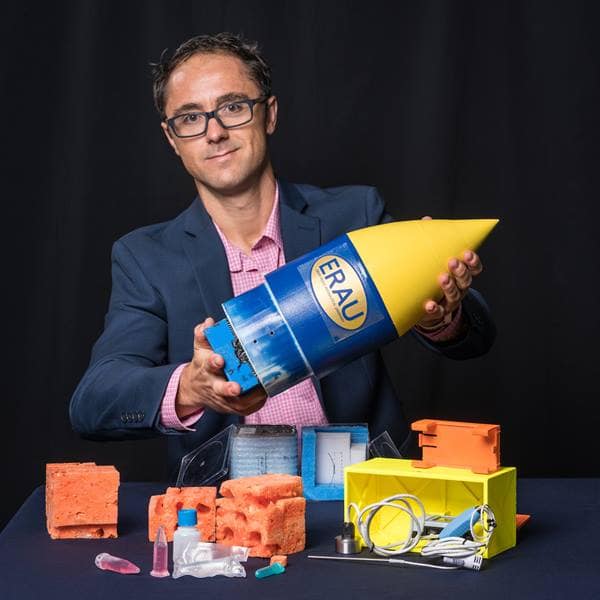Embry-Riddle Payload to Assess Microgravity Impacts on the Immune System

The Cell Research Experiment in Microgravity (CRExIM) suborbital payload will be the first of what he hopes will be many payloads to fly through Embry-Riddle.
“It’s a multidisciplinary effort between various colleges at Embry-Riddle and other universities nationwide,” Llanos says. “Spaceflight operations and aerospace/mechanical engineering students – along with Embry-Riddle’s Department of Applied Aviation Sciences – are working together with a science team comprised of the University of Texas Health Science Center at San Antonio and the Medical University of South Carolina.”
The Mission
The CRExIM payload, which contains T-cells isolated from mice and grown in the laboratory, will be exposed to microgravity for about three and a half minutes. These types of cells are the main warriors of our immune system, tracking down and defeating cells that are infected or have become cancerous. The idea behind the experiment is to get insights on how brief exposure to microgravity orchestrates the landscape of different types of immune cells, say Llanos and his colleague Kristina Andrijauskaite with the University of Texas Health Science Center.
Sathya Gangadharan, a mechanical engineering professor who helped advise on the project on the design of the structure of the payload, says: “I’m very glad that Embry-Riddle is pioneering this new area of cancer cell research from a biomedical engineering perspective, utilizing its past experiences in microgravity to bring solutions to problems that are critical to the medical field.”
Getting it Off the Ground
The payload itself will be housed in a 3D-printed structure designed and printed at Embry-Riddle’s Engineering Physics Propulsion Lab on the Daytona Beach Campus. It was tested to meet the different milestones set by Blue Origin’s payload users guide for ensuring the safety and containment for biological agents.
To plan the mission, Llanos formed three teams to work on the suborbital payload: a flight operations team, a design and engineering team, and a science team.
“We went through various design iteration processes and worked closely to test the designs using computational analysis software,” says Vijay Duraisamy, a mechanical engineering Ph.D. student who worked on the project along with a large team of Llanos’ undergraduate students.
Collaboration is Key
Because of the nature of this multidisciplinary project, students had to build and expand their team dynamics by working with other teams at the university, as well as industry experts.
Llanos says the project, which was awarded second place at the 2017 Embry-Riddle Discovery Day Awards, allowed the team to work on real-world opportunities while giving students the chance to collaborate with other teams and mature their problem-solving skills.
A second payload, which will measure conditions aboard Blue Origin’s New Shepard rocket before the spacecraft’s first manned flight, is in the works.
Editor’s Note: This article was originally published in the Fall 2017 edition of ResearchER magazine (Vol. 1, No. 2). The ResearchER archives can be found on Scholarly Commons.
